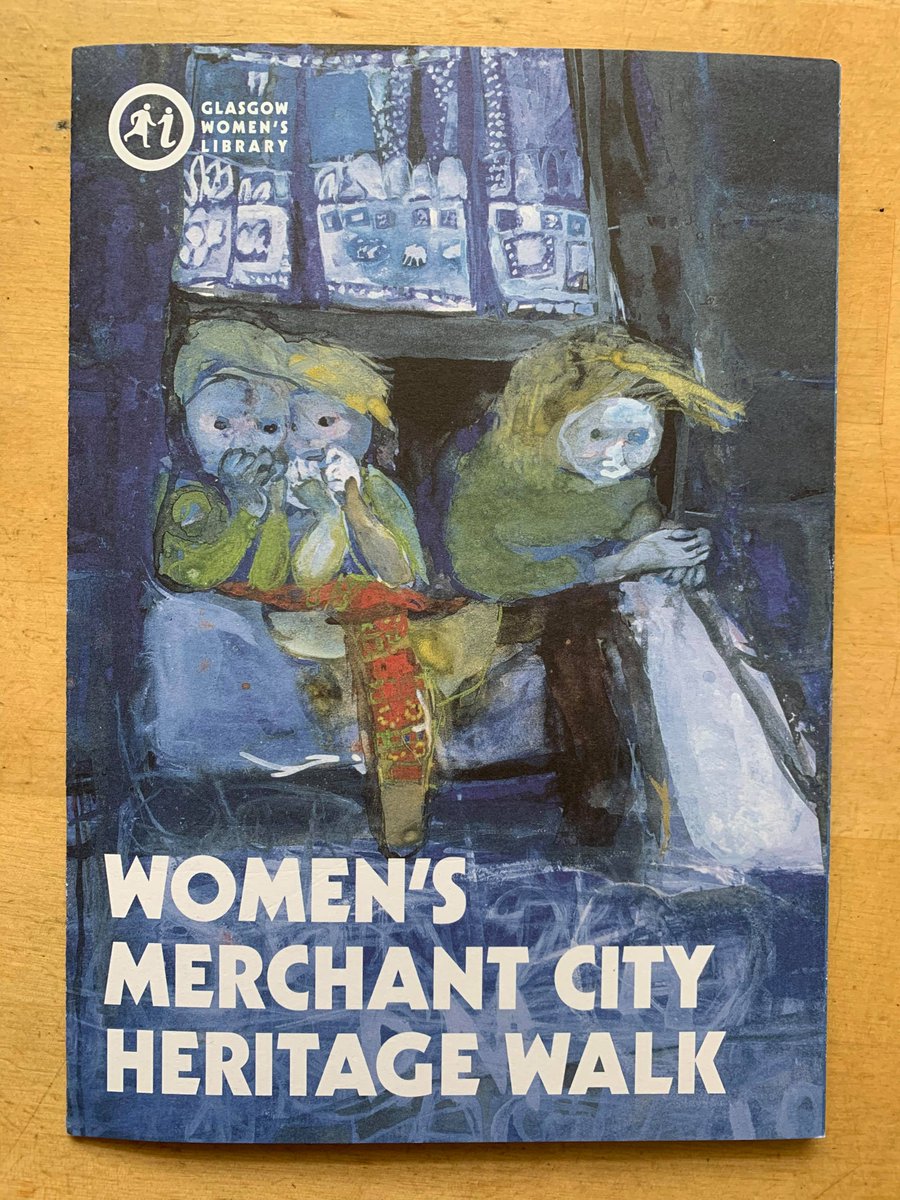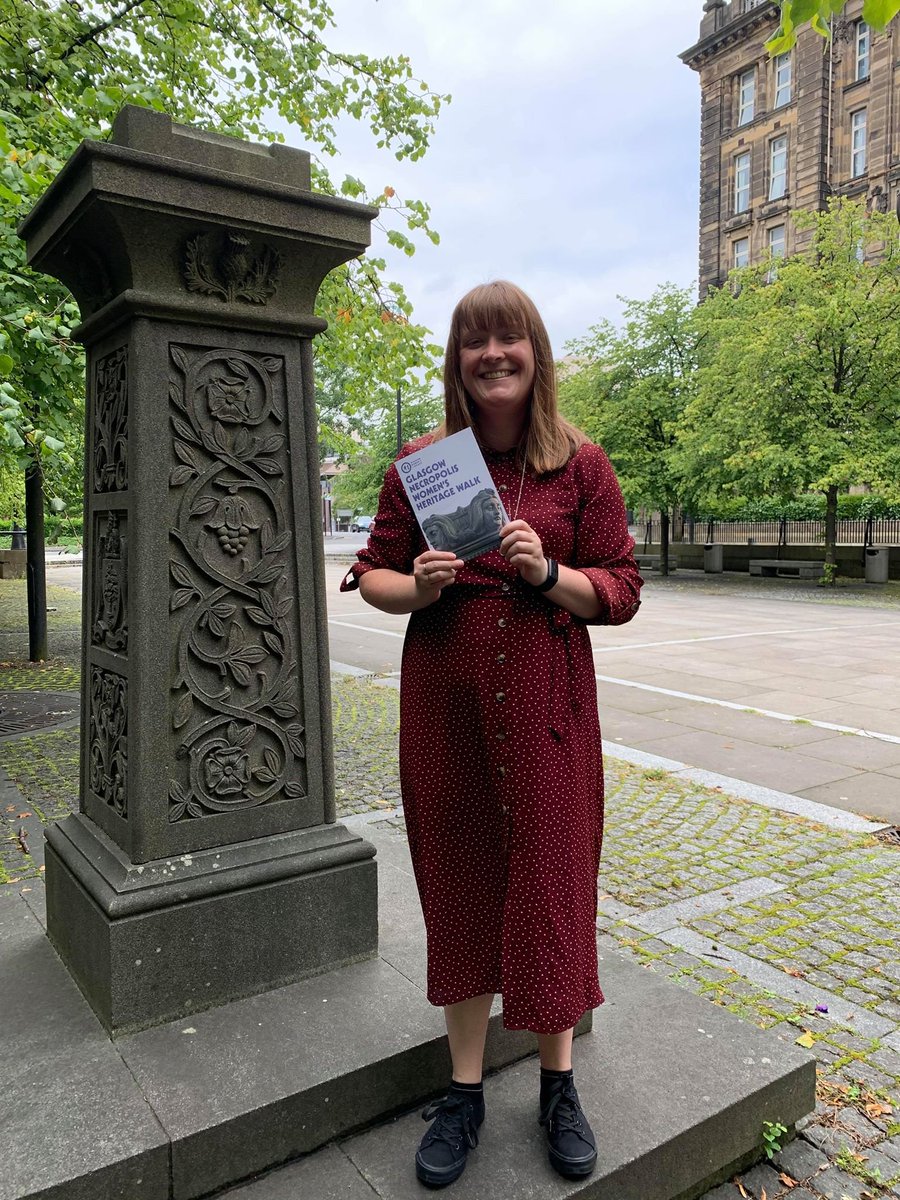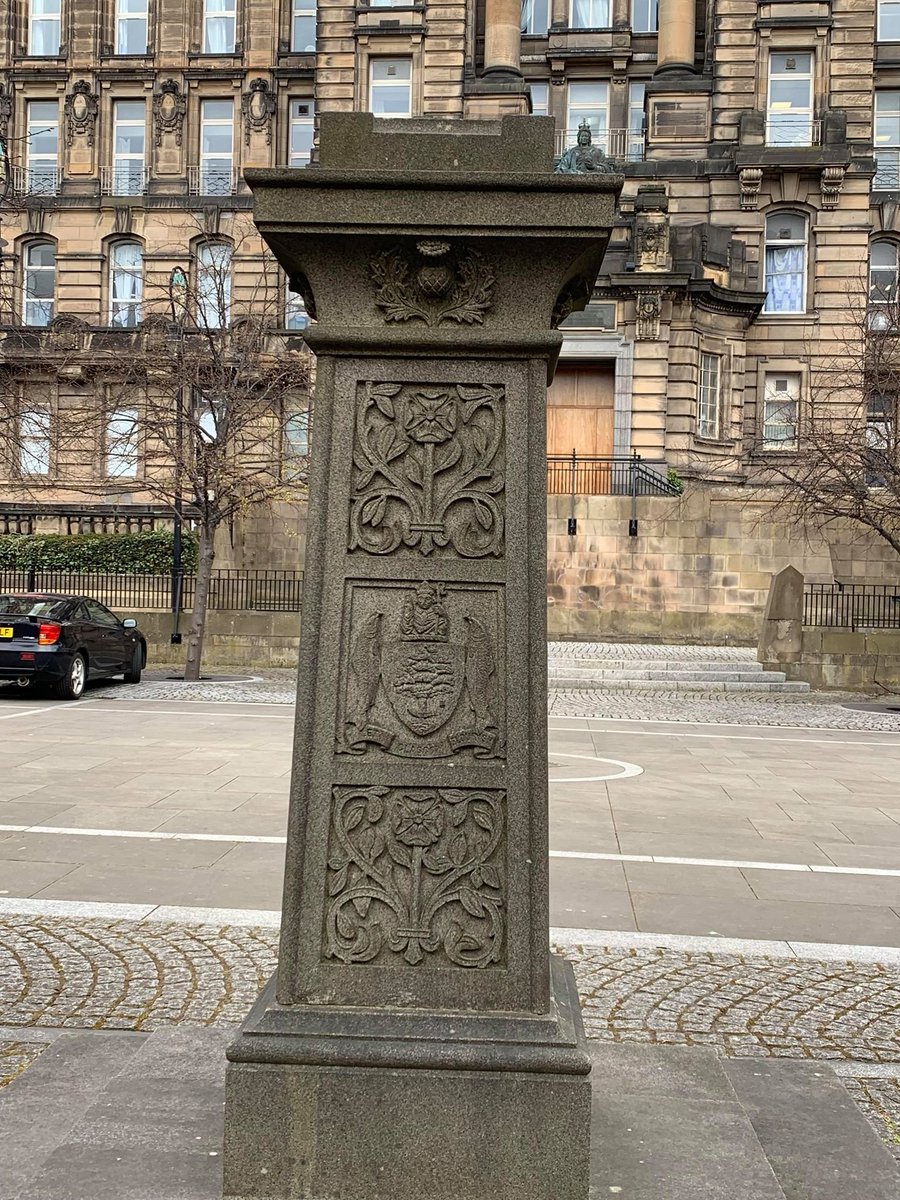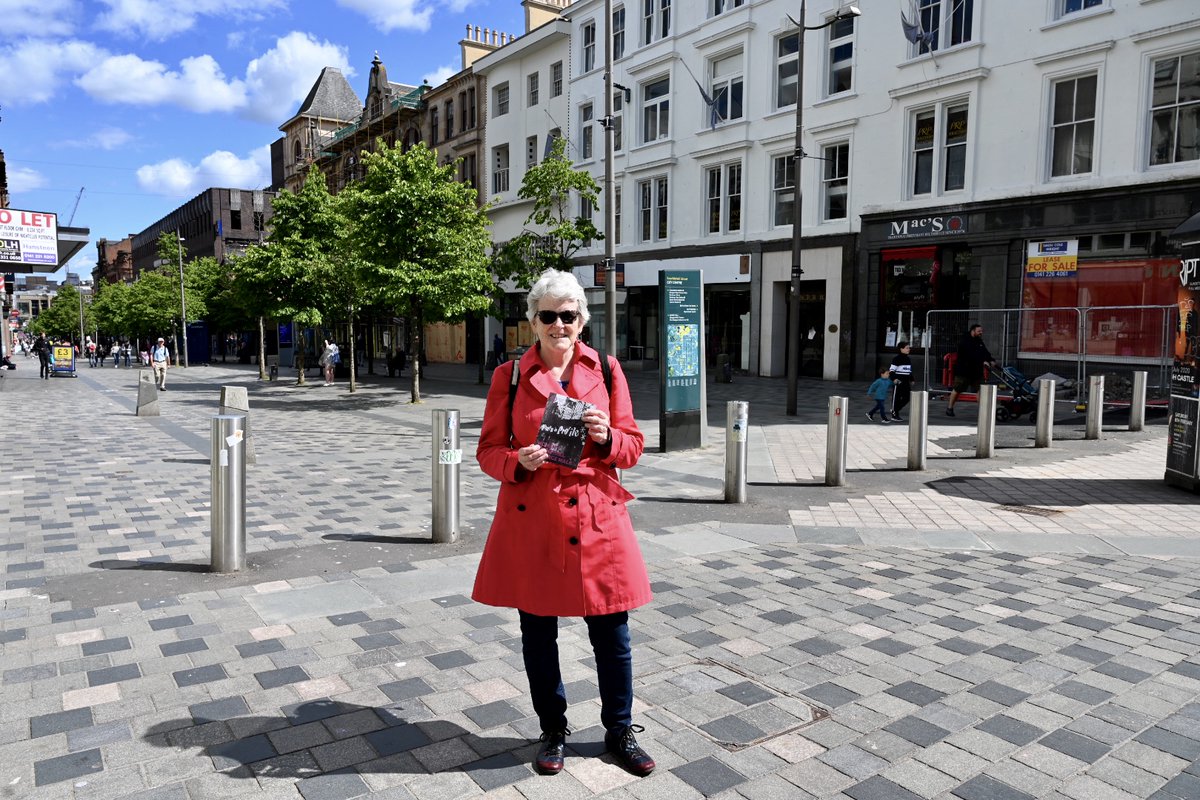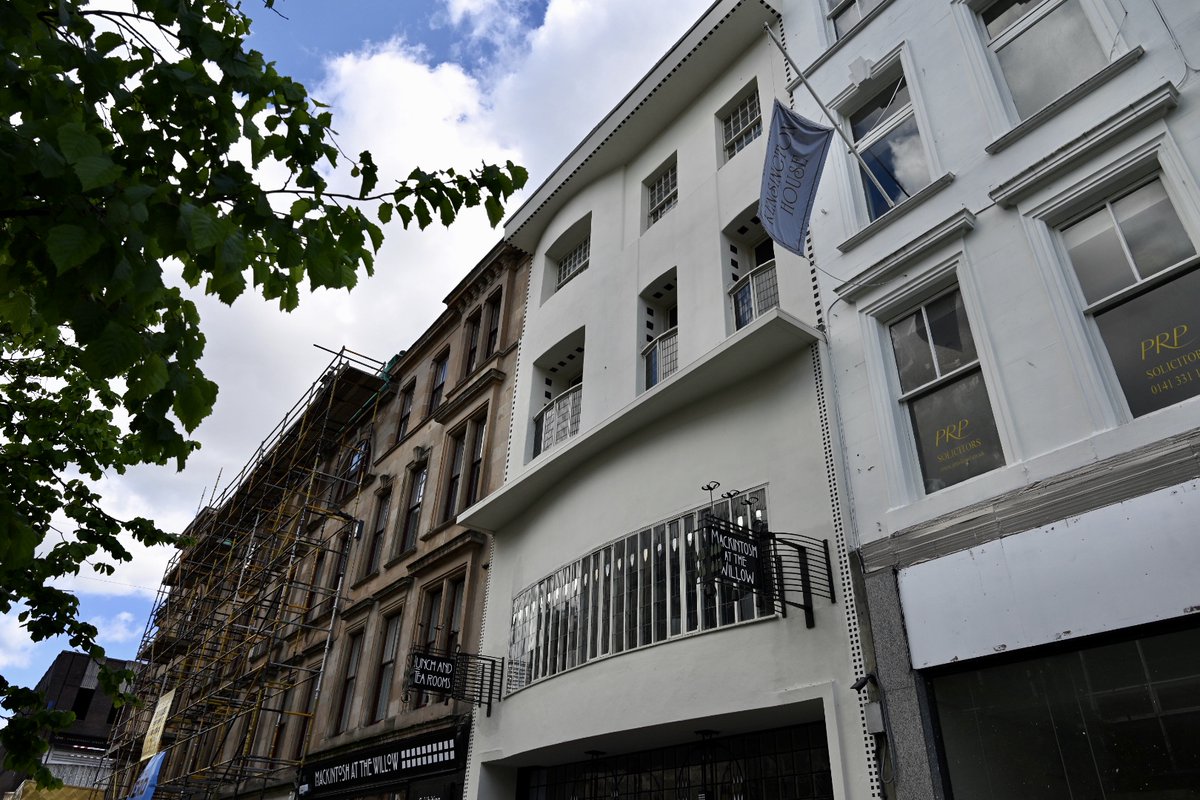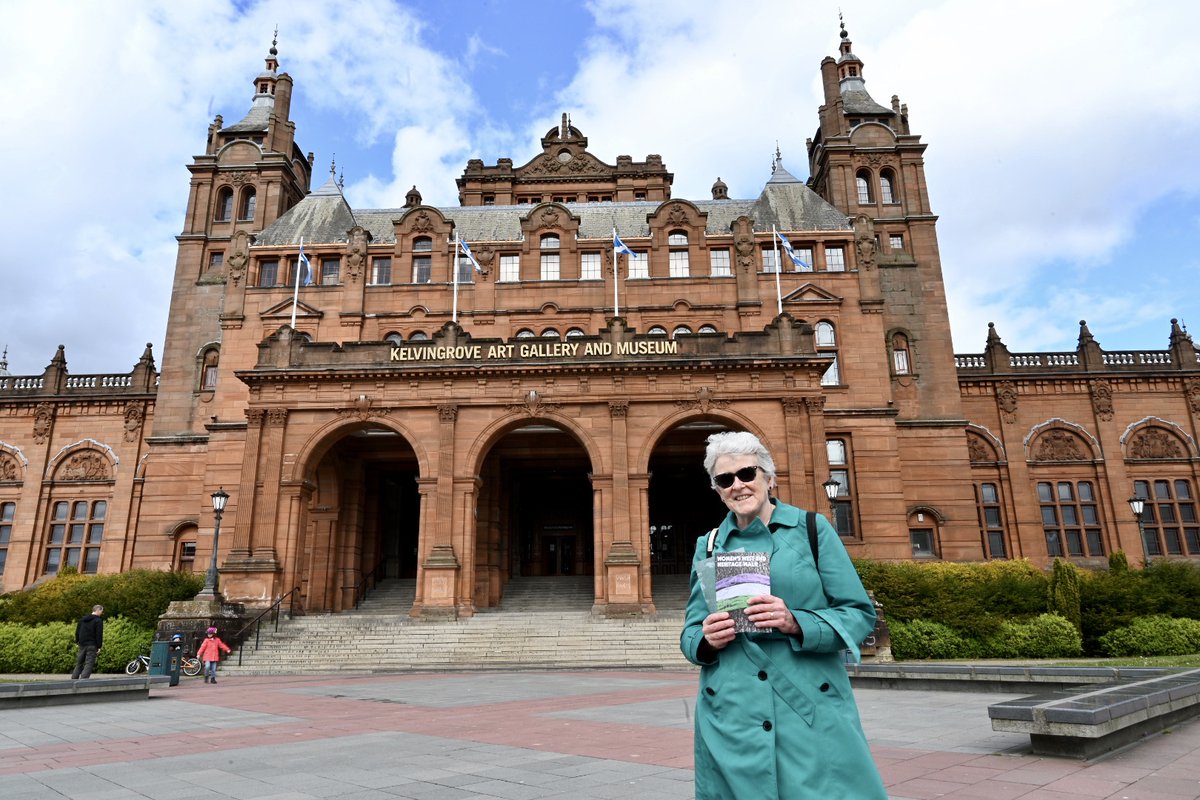
Hi everyone! I'm @LouBell, one of the Women's History tour guides at GWL. Sadly, we can't take you on any walks at the moment, so i've created this virtual version of our Women of the Gorbals walk for you all! 
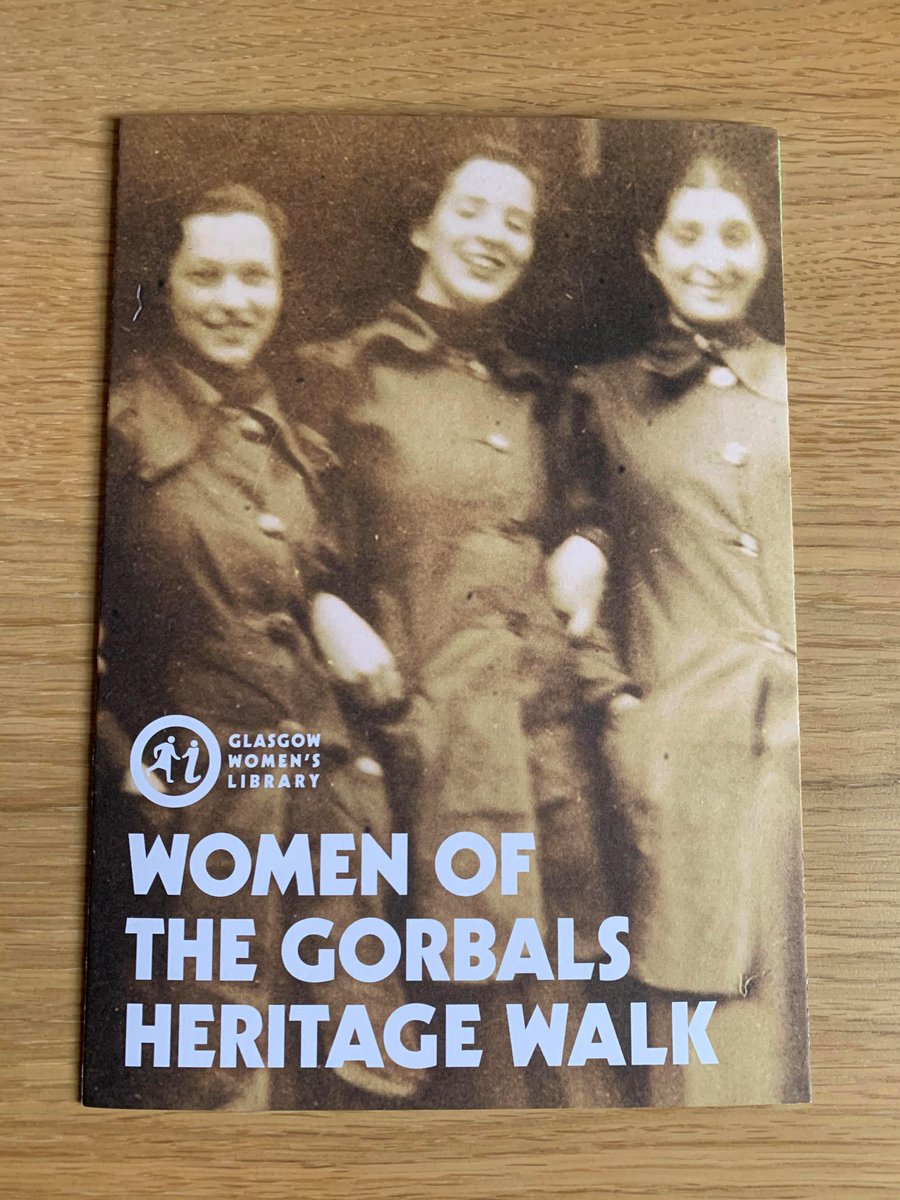
Normally, i'd kick off the tour with a photo of me holding up the leaflet at one of the stops, but unfortunately I haven't been able to make it through to the city for a while. I miss it loads, and i'm sure some of you do too. So hopefully this tour helps a little with that.
Let's begin at Victoria Bridge. We are standing at the medieval gateway to Gorbals - where a wooden bridge crossed the river to Bridgend, a row of turf cottages on Gorbals Moor. The bridge was rebuilt in stone in 1345, with Lady Marjory Stewart of Lochlow funding an arch. 
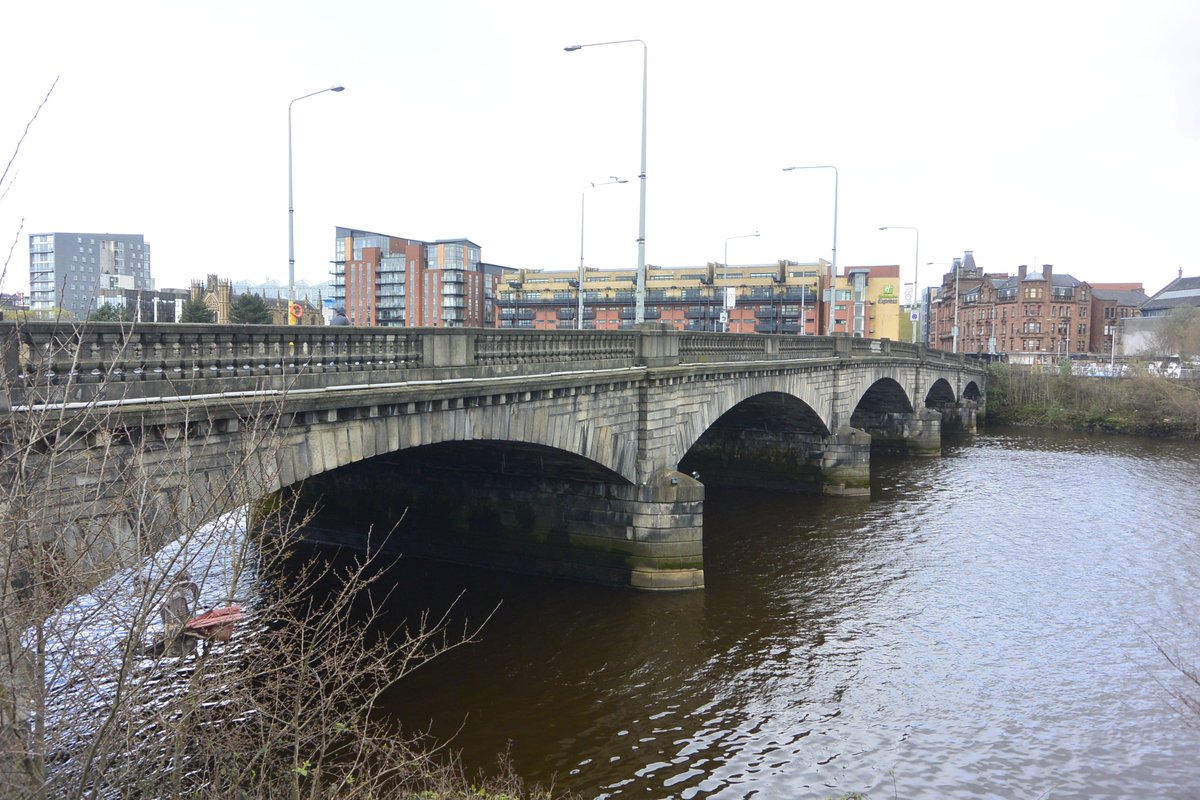
By 1771, Gorbals village had grown to 3000 people. The Irish begin to arrive around the start of the 19th century, seeking seasonal work. Perhaps they'd get a bed for the night at compatriot Molly Gillespie's - who charged thruppence a bed, but kept 2 free for the destitute.
After the Irish potato famines and the Highland clearances, new arrivals increased in both numbers and desperation. Families were crammed into slum tenements, and the Gorbals acquired a reputation for overcrowding, sickness and poverty.
Many Irish women would find work in Gorbals' weaving mills, but some preferred self-employment, giving their name to Paddy’s Market. The Clutha used to have a mural of women hawkers on its walls - showing the women who would work in the market. 

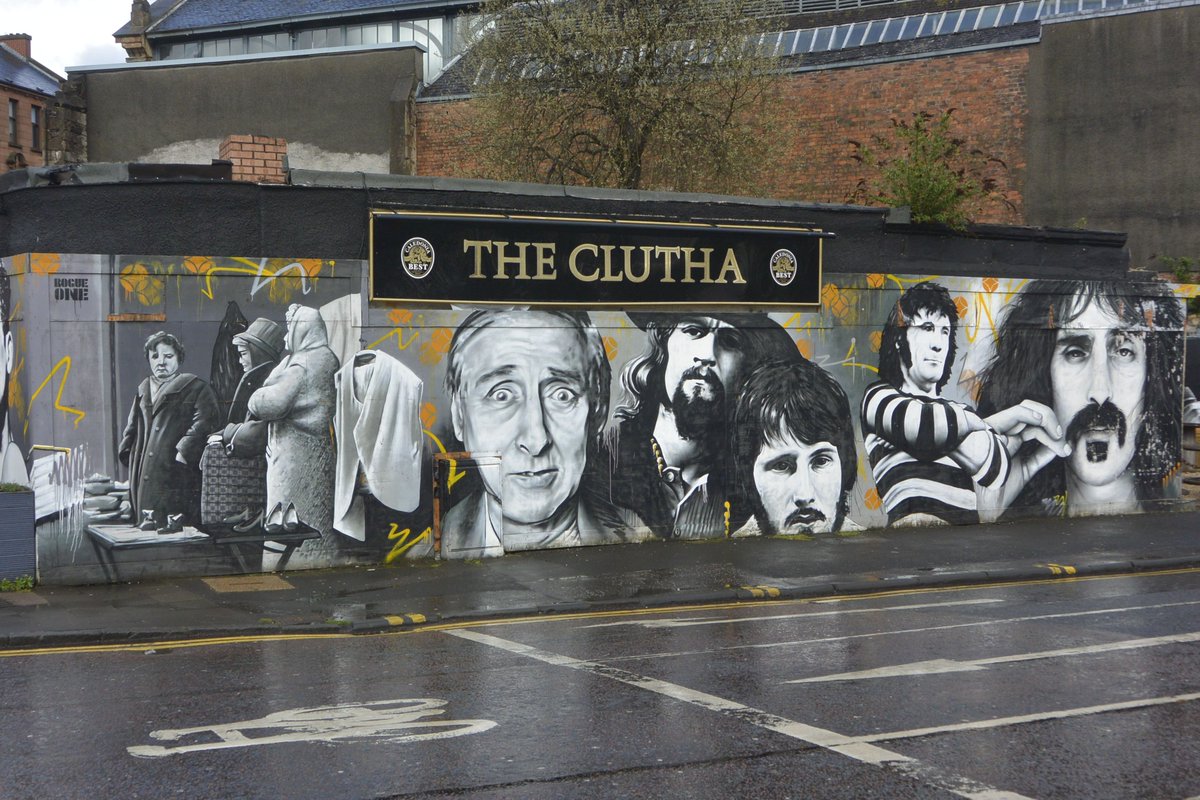
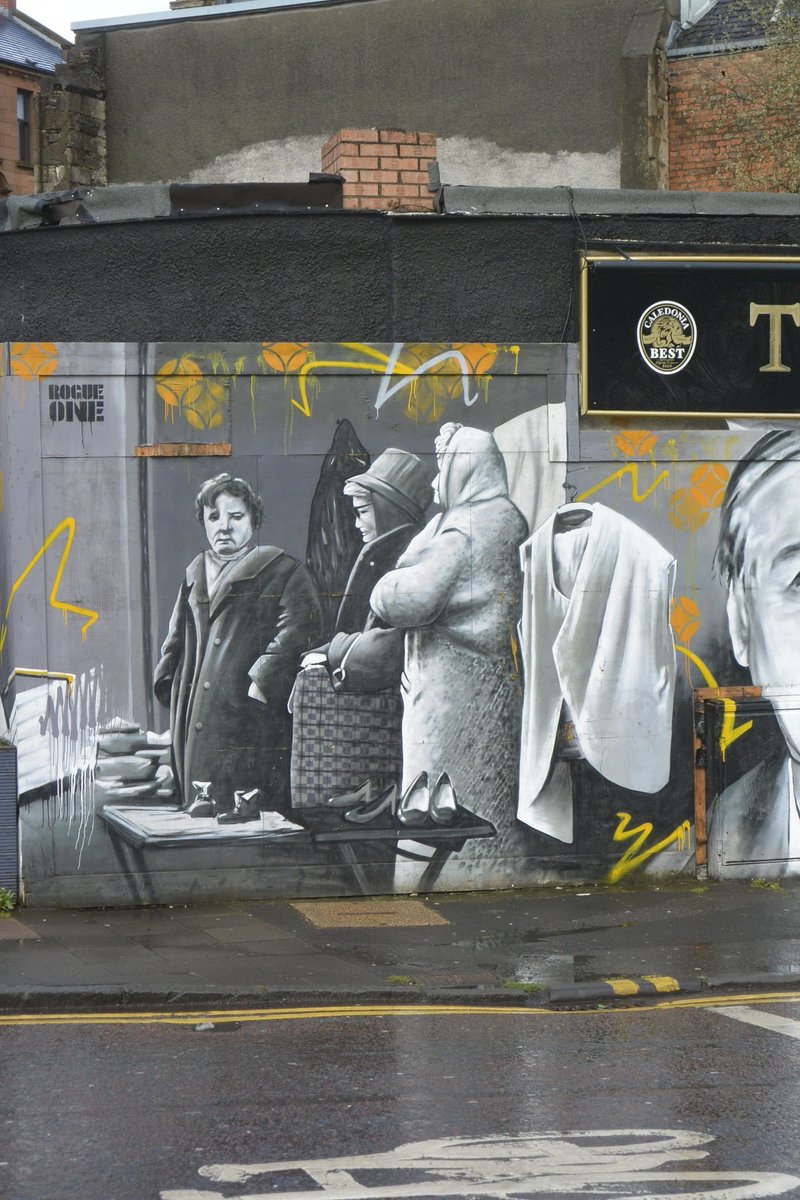
Let's now head over the river into Gorbals proper & learn about the other populations that made up the area. After the Irish came European Jews, fleeing Russian, and then Nazi persecution. Typically all housed in the same tenements, there was a real sense of community support.
Over the years, the Jewish community migrated to other areas & were replaced by South Asians, responding to post-WW2 labour shortages. Many women worked in textile factories, but some also taught classes in Urdu at Abbotsford Primary - some still teach at the Central Mosque today 



Moving up the road: A decade before Scottish universal healthcare in 1948, Florence St Clinic targeted the health of Gorbals kids, with sun-ray treatment, vitamins and orange juice, for rickets. 

Poor health has been, and continues to be, linked with poverty. In 1900, plague returned to Gorbals, with the outbreak emerging in this very street, then called Rose St. The first victims were Mrs Bogie, who was a fish hawker, and her granddaughter. 

Funding for the first Glasgow Samaritan Hospital for Women was raised by medical staff who perceived a dire need among poor women for gynaecological services. The demand was real - after it opened in South Cumberland St. in 1886, women were soon queuing onto the street.
There were only three in-patient beds, but later it moved to its better-known site in Govanhill, developing into one of the largest such hospitals in Europe.
This factory, built in 1816, was a cotton mill, but is now commonly known as Twomax Clothing Factory. The billow from its chimney is Smokestack, designed by Rita McGurn, which sits on a steel drum inside the chimney, and rotates like a weathervane. 

McGurn was born near the Barras in 1940 & raised by eccentric grandparents who owned an antique shop & a variety of exotic animals. Self-taught, she attended Glasgow School of Art, but as a model, not a student. That didn’t prevent her from creating a body of works in many media. 

Mills like this were the site for bitter industrial disputes from the 1820s. Women replaced men in operating spinning mules (machines) but for a much lower wage. Male spinners campaigned against their female counterparts, as well as terrorising them.
By 1837 there were as many female as male spinners in Glasgow. And not so biddable as it turns out – mill workers from Gorbals, many of them Highland or Irish women, participated in the Glasgow Bread Riots of 1848, demanding food for the unemployed.
"The Rosie," a former burial ground, was a precious green playground for kids living in cramped, single-end, tenements. Gorbals residents bought this land in 1715 for use as a burial ground. The last burial was 1915 but headstones weren't cleared until 1951 - some are still there 

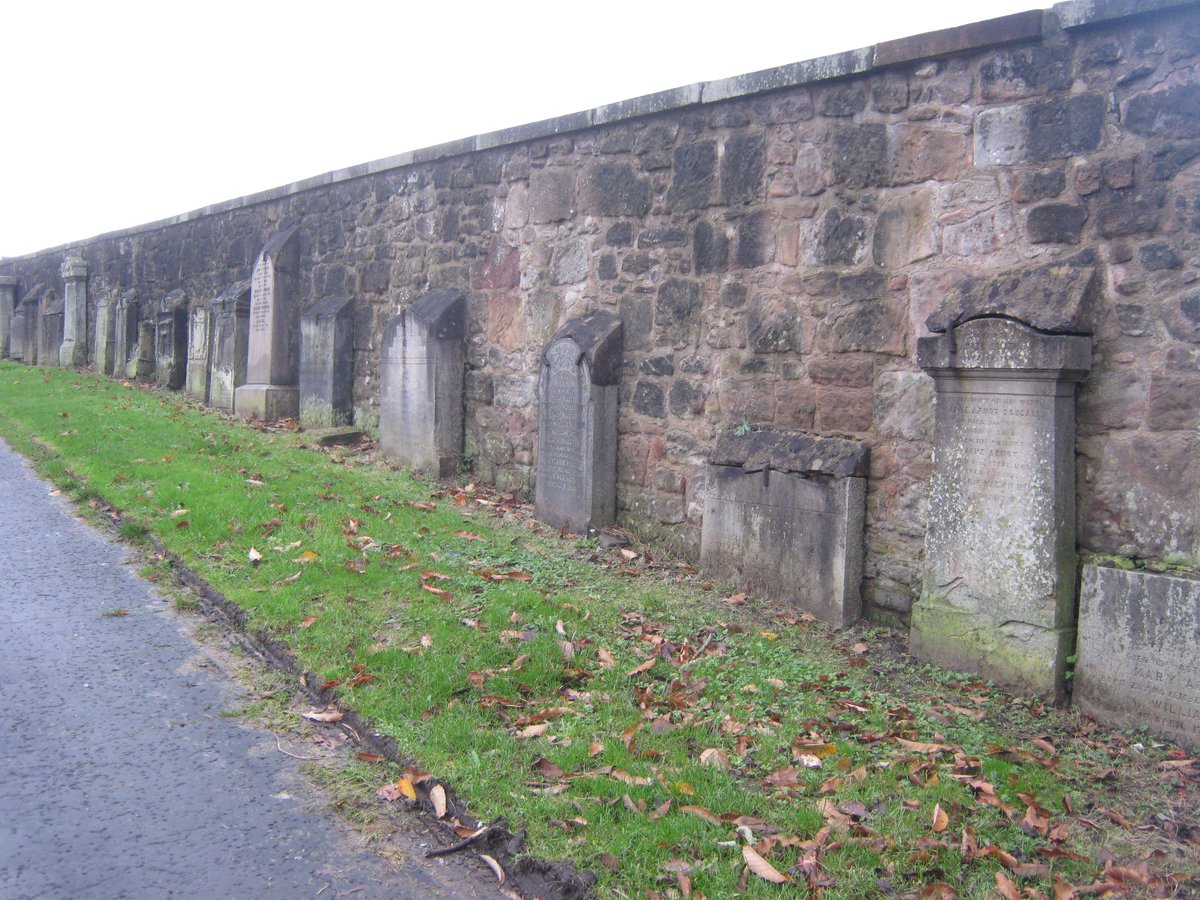
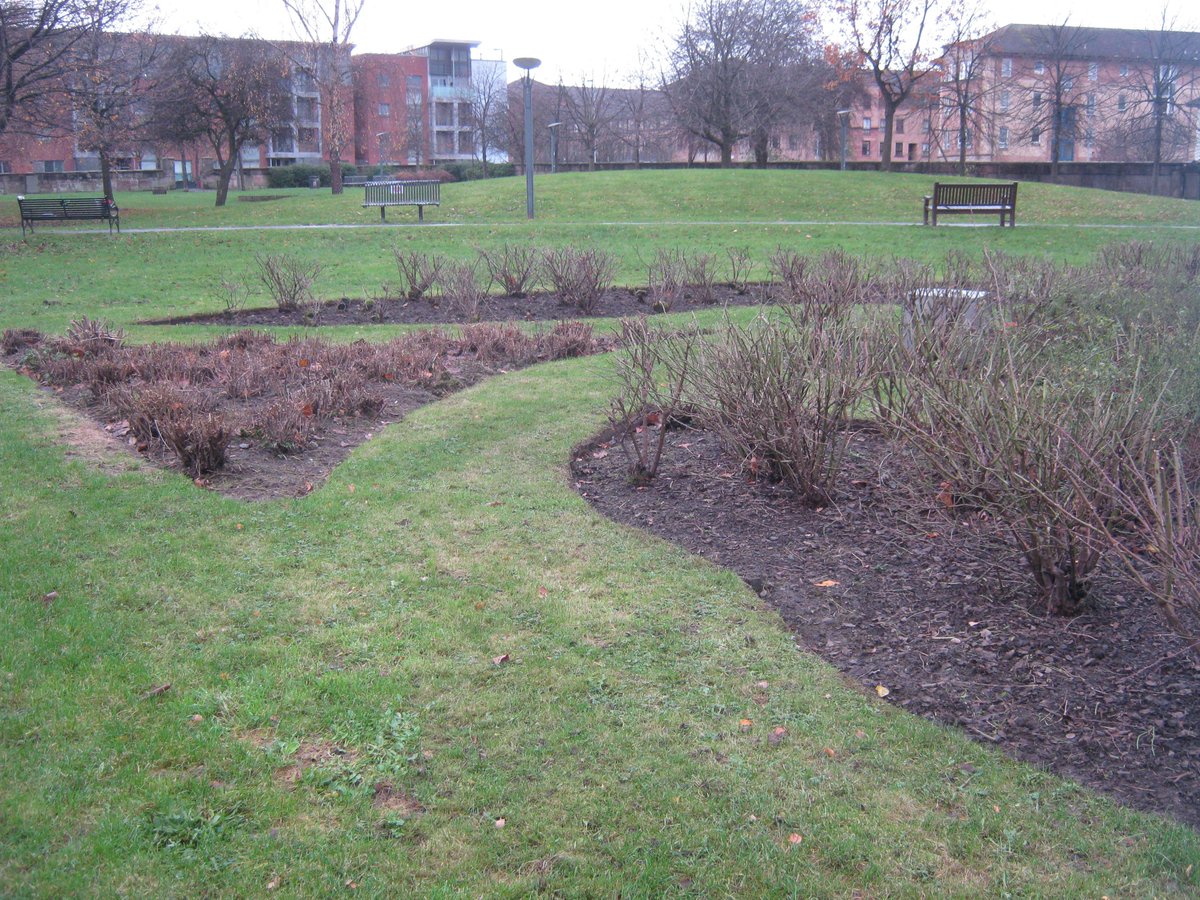
Let's turn now to the artworks by 2 women artists in "the Rosie." To the north is the bronze Rose War Memorial by Liz Peden. Specifically dedicated to VC winner Private James Stokes, it also serves as a tribute to all Gorbalites who gave their lives in conflict. 

By the east wall is Gorbals Orchard, by Amanda Currie. Free for all to harvest, it serves a practical as well as artistic function in an area that historically suffered poverty and malnutrition. 

Leaving by the south gate, we now head to Queen Elizabeth Gardens. On this site stood the notorious high-rise flats of Queen Elizabeth Square. Local Labour MP Alice Cullen called for a solution to Gorbals' housing crisis in her maiden speech of 1948. 
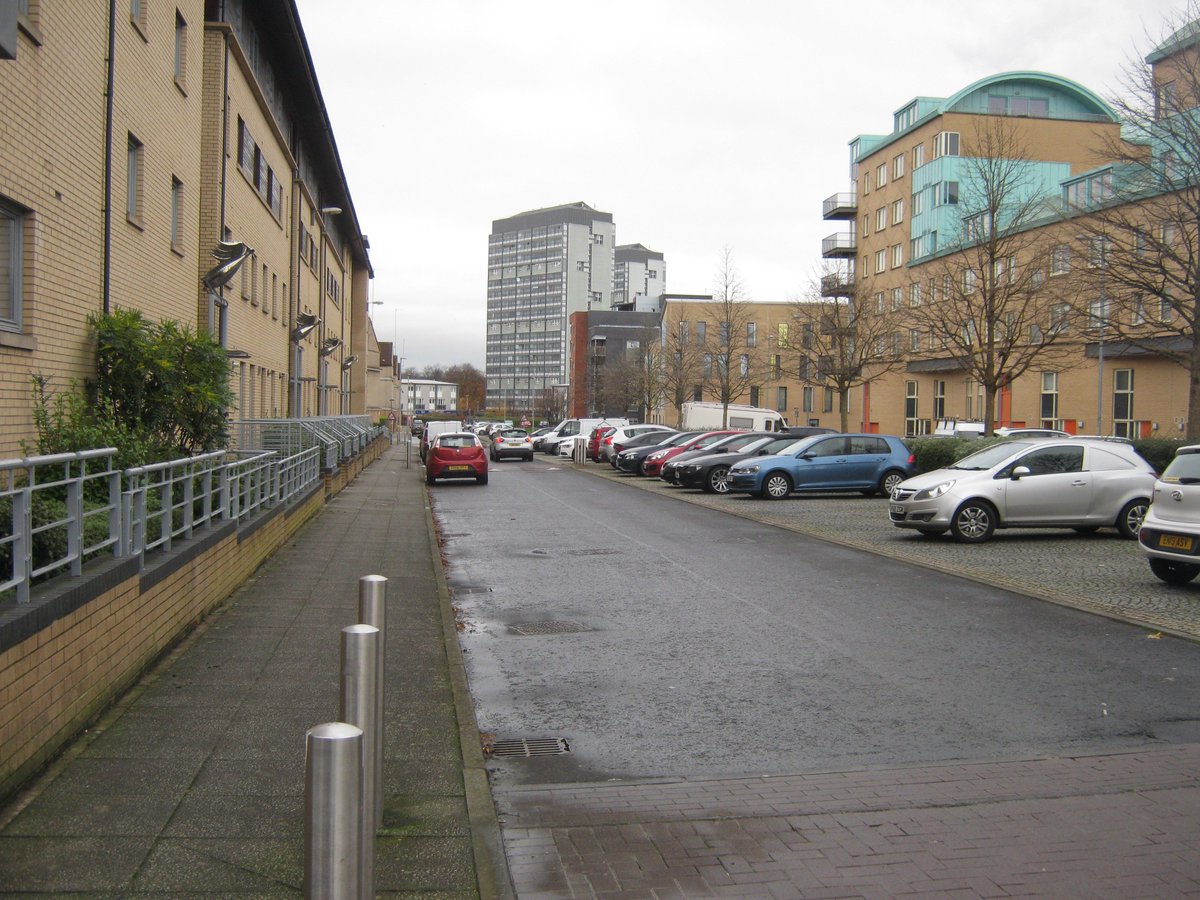
Cullen's campaigning was rewarded in 1957 by an ambitious programme of slum clearances by Glasgow Corporation. When new flats were completed in 1965, many women were delighted with their new sky-high kitchenettes and indoor bathrooms, but others missed the tenement camaraderie.
Plagued by damp, and too expensive to maintain, they were scheduled for demolition after less than 30 years. The demolition, in 1993, was botched and bystander Helen Tinney was killed by flying debris.
Before we move on, we have the sculpture Gorbals Boys, which recreates Oscar Marzaroli's iconic 1963 photograph in bronze.
Sculptor Liz Peden says:
The Gorbals always had this reputation of the men with the big rough and tough image, and this cut right through that.
Sculptor Liz Peden says:
The Gorbals always had this reputation of the men with the big rough and tough image, and this cut right through that.
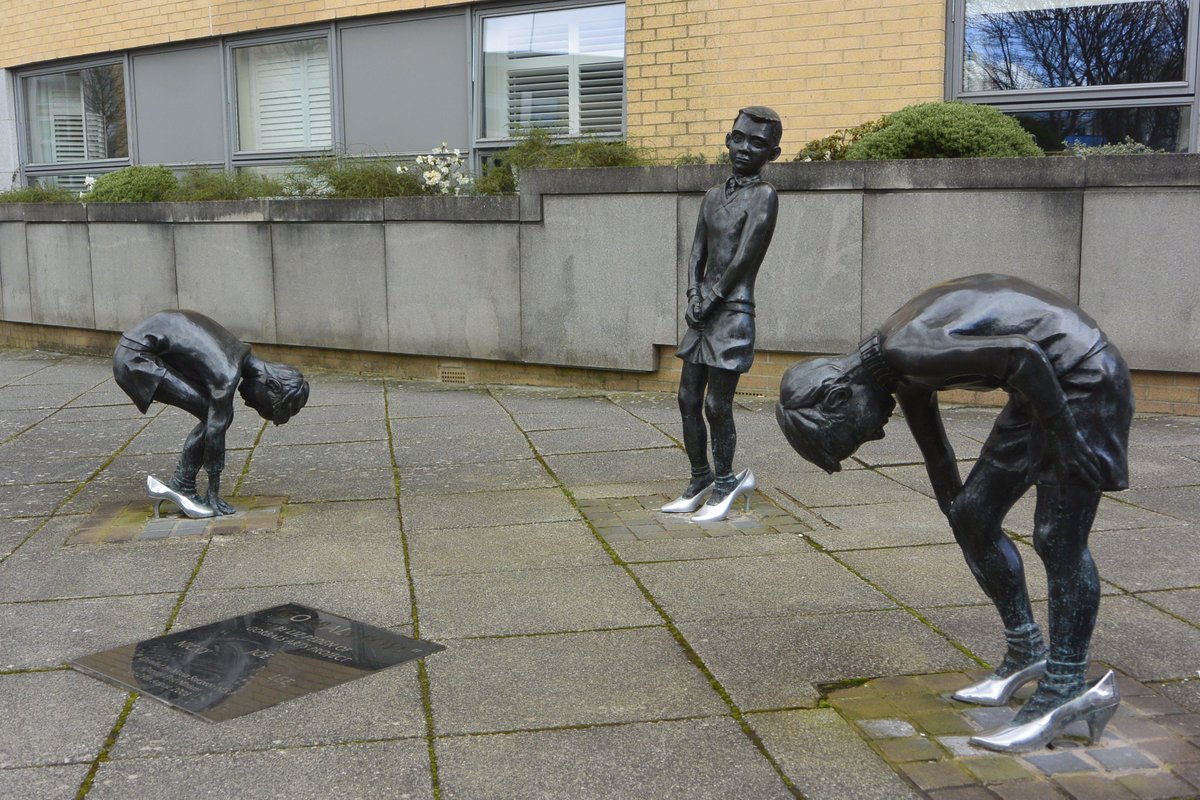
The former St Francis Church, now a community centre, serves as a backdrop to discuss the pastoral work of a woman the Daily Record called “the Angel of the Gorbals." Lilias Violet Graham was a Scottish aristocrat who moved to the Gorbals in the 1950s as a church lay worker. 
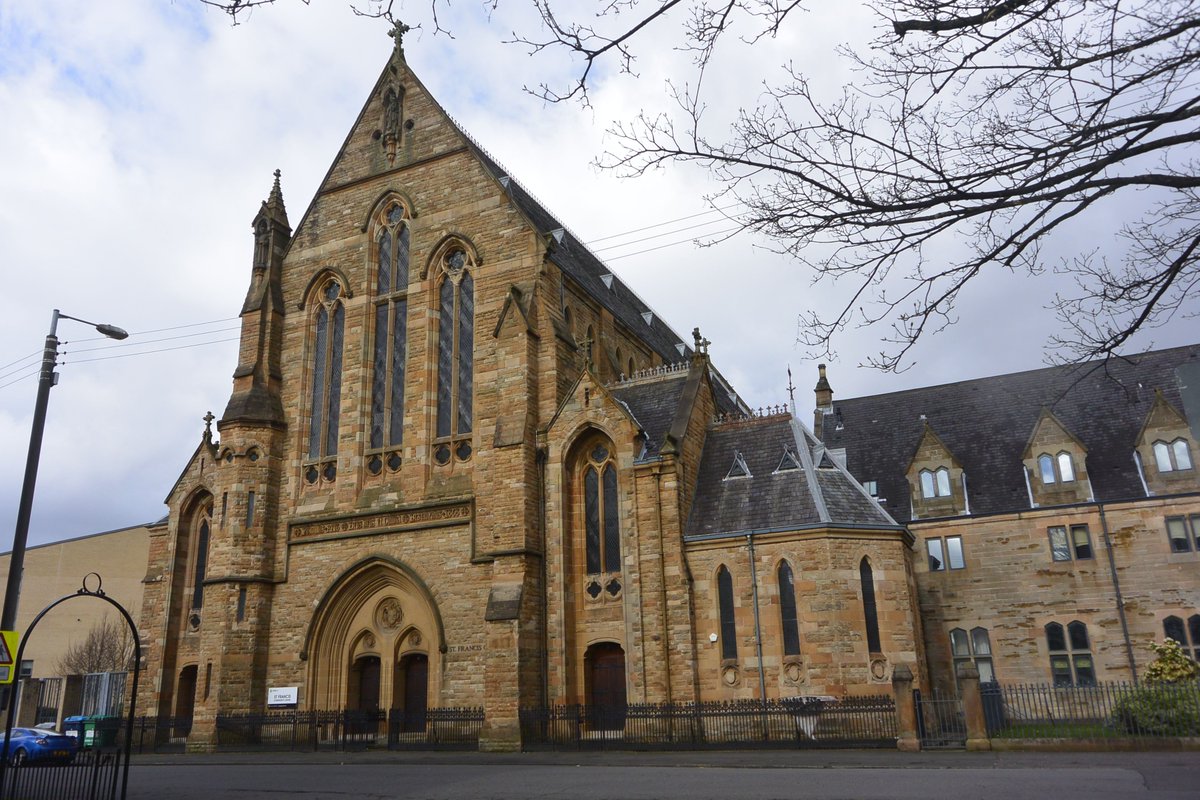
Her flat in Abbotsford Place became a hub for locals seeking advice, the “Auld Hens” women’s group, children’s clubs & trainee social workers. Across the landing, she & volunteers ran a nursery of 60 children, & round the corner in Abbotsford Lane, she set up a youth club. 

After a child asked her “What’s a holiday?” Lilias recognised that children needed a break too. She set up a network of families across the country willing to take kids in for a holiday. These fortnights in the fresh air away from over-crowded flats & pollution were life-changing
Upon inheriting the family manor near Stirling, in 1972, Lilias opened its doors as a holiday & respite centre, where women and children could escape violent husbands & fathers. On her retirement, she gifted the house to the Lilias Graham Trust which continues her legacy.
We're now heading to the Southern Necropolis. Opened in 1840, the lairs were more affordable, and the monuments consequently less grand than those in the Necropolis by Glasgow Cathedral. 
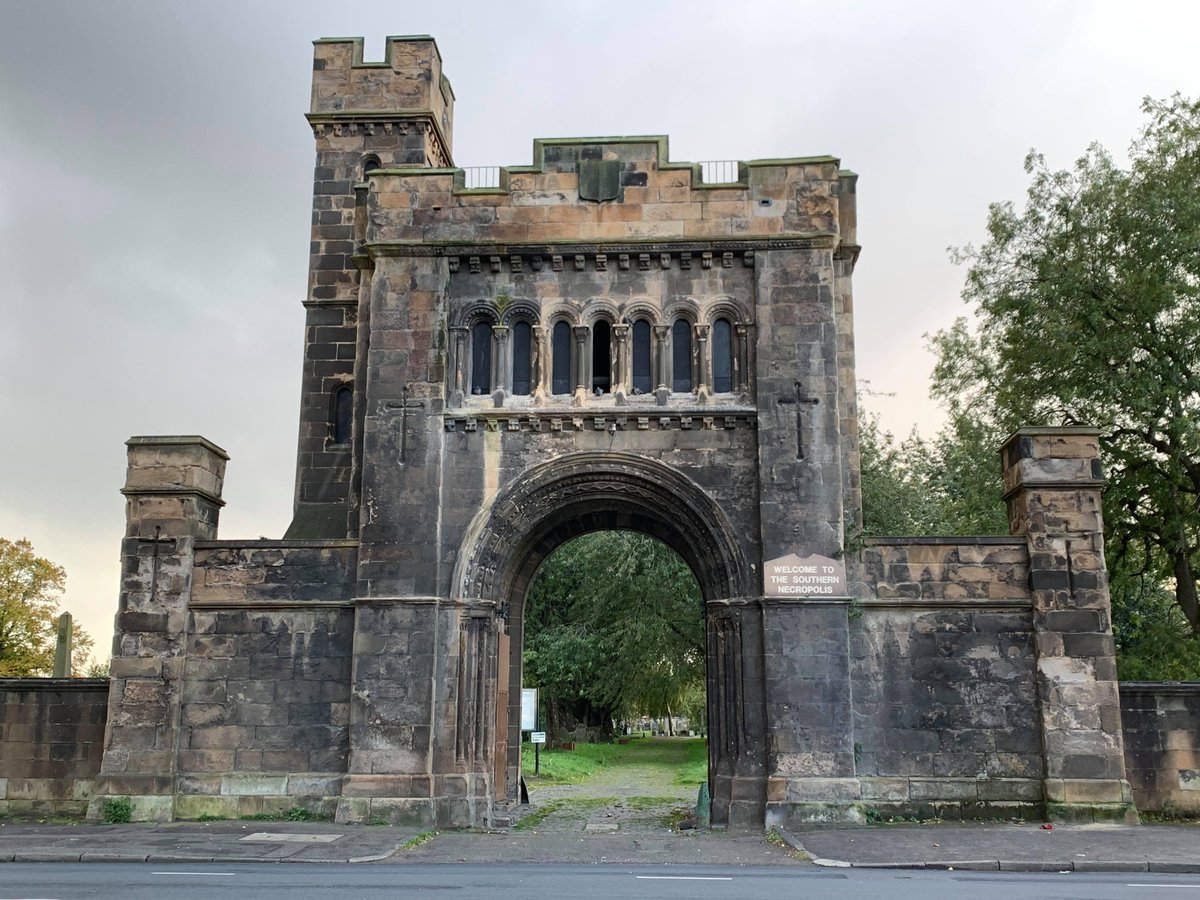
In a grave in the very northeast corner lies the Heroine of Matagorda. Agnes Harkness was born in 1771. With her young child, she accompanied her soldier husband on campaign during the Napoleonic Wars. 
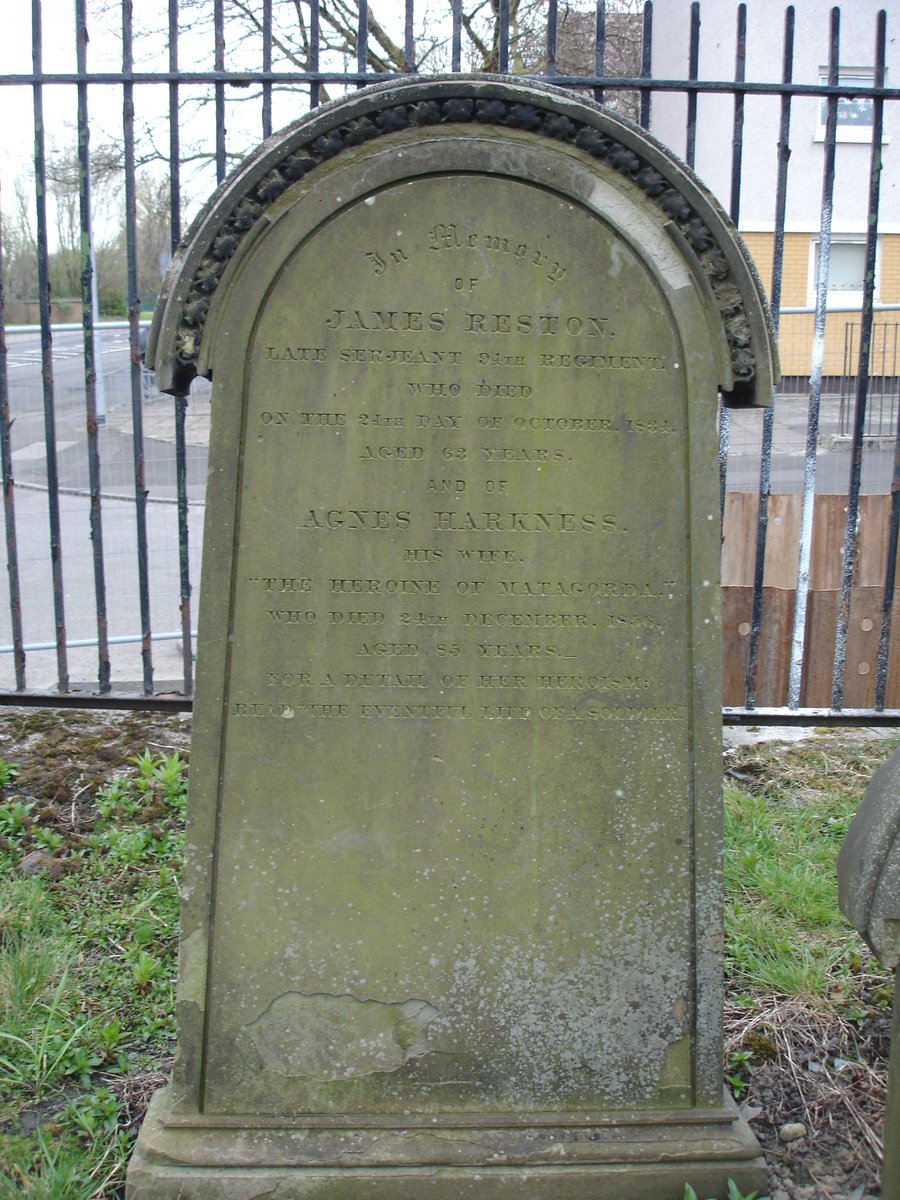
In 1810, they were stationed at the fort of Matagorda in Spain, when it was besieged by the French. Agnes refused to leave after the other wives were sent away for safety. She got her 4-year-old son to shelter, and then went to help with the men and wounded.
When the order to withdraw came, she made three desperate forays across the battery, braving shot and shell, to retrieve her family’s belongings and her son.
Back in Glasgow, the family lived on her husband's army pension but, after his death, Agnes received no further financial support, and became an inmate of the Town's Hospital and Poorhouse for the next decade, where she tended the sick.
A public appeal in 1845 finally brought her an annuity of £30 a year, but aged 74 and with no home of her own to return to, she chose to remain in the poorhouse, now paying her way. Generous to the end, she set aside a sum at her death, aged 85, for charitable donations.
Now let’s make our way to the next stop, to learn about some political women of the Gorbals!
The birthplace of our next figure, 175 Cumberland St, no longer exists - it's a pity, for this formidable suffragette, pacifist, and communist deserves a blue plaque! Can anyone guess who we are talking about? 

Helen Crawfurd, was born in Gorbals in 1877, but spent her childhood in England. Returning to Glasgow aged 17, she was deeply affected by the disparity in living standards she witnessed, and began to think there was something wrong with a system that could allow this.
She joined the suffrage movement as the new century dawned, and soon adopted militant tactics - she was allegedly responsible for the notorious explosion at Kibble Palace in 1914. She endured imprisonment and hunger strikes for the cause. womenslibrary.org.uk/discover-our-p…
During the war, she organised rent strikes against profiteering landlords, and summoned thousands to march in the Women's Peace Crusade on Glasgow Green. Her feminism merged with socialist principles, and she became a major figure in the Labour party.
Her final years included service as Dunoon’s first female councillor, where she died in 1954.
Another woman politician associated with Gorbals is Maria Fyfe. She was born here in 1938, though when she stood for parliament in 1987 it was for Maryhill.
She spent many years on the Labour front bench and was proud of her role in the 50-50 campaign to ensure the Scottish Parliament started life with an almost equal representation of women.
We will now walk back through the new Gorbals to the old. This is Seven Arches by Liz Peden and arts group WAVEparticle, completed 2016. The murals pay tribute to notable locals, including Benny Lynch and Allan Pinkerton, founder of the Detective Agency. 
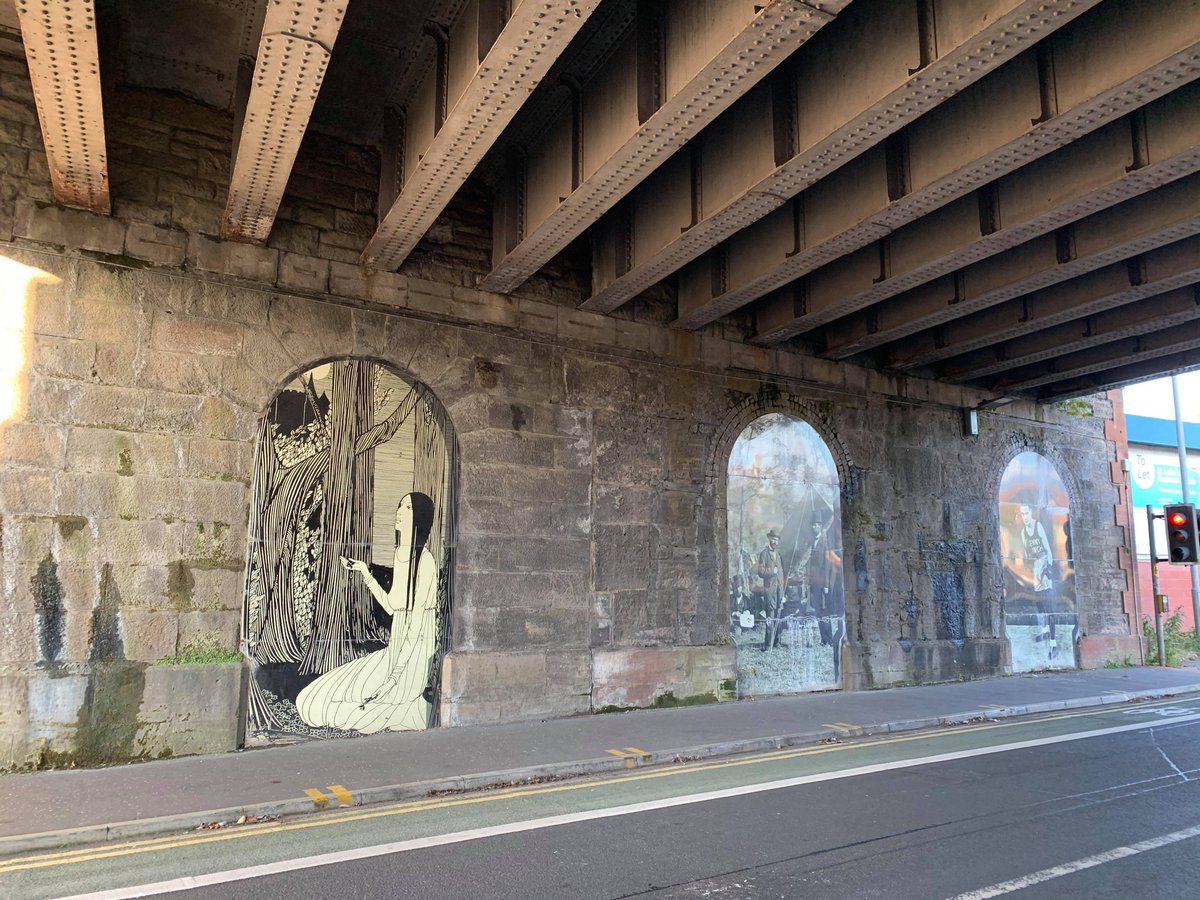
One panel reproduces Girl in a Wood, a 1928 drawing by Hannah Frank. Born in South Portland St in 1908 to Russian-Jewish immigrant parents, she is best-known for her austere yet romantic monochrome drawings, influenced by Art Nouveau, but after 1952, sculpture became her focus. 
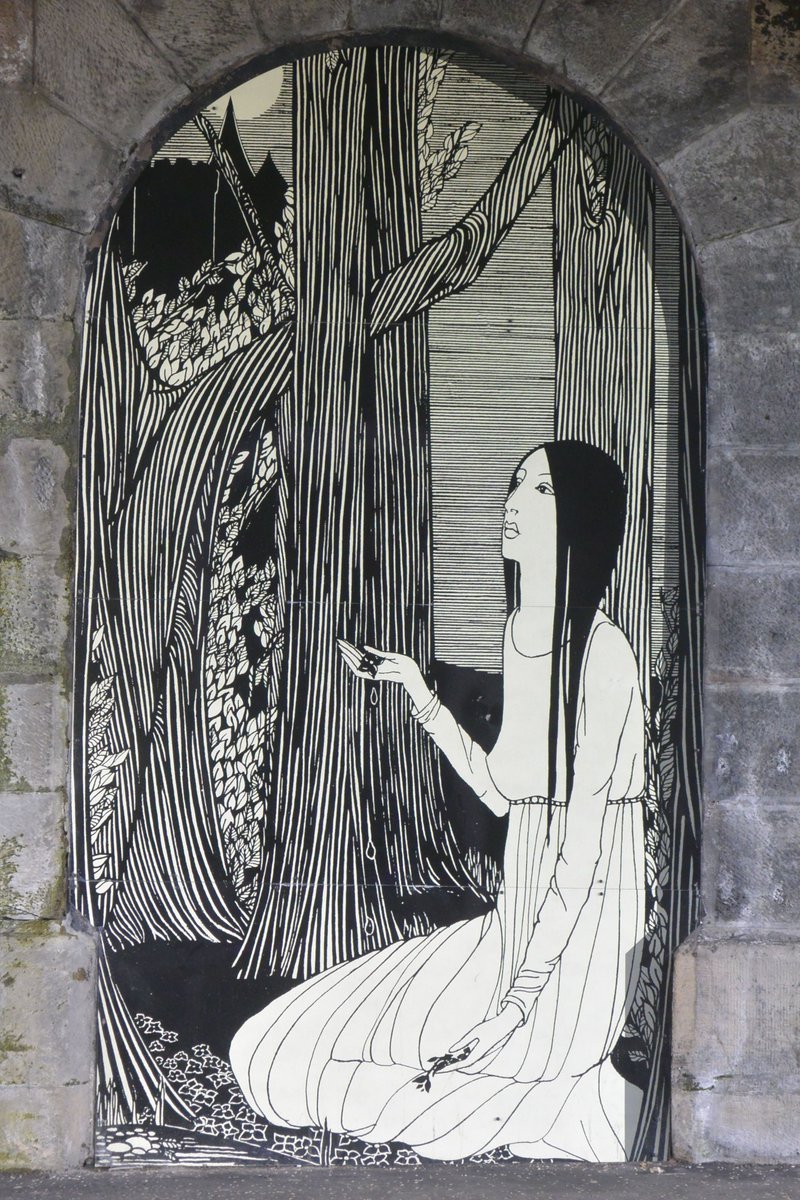
For much of her life her work was not widely known. It was only after her niece championed her work in advance of her centenary, Frank finally achieved proper recognition as the last living Glasgow Girl. She died, aged 100, in 2008. 
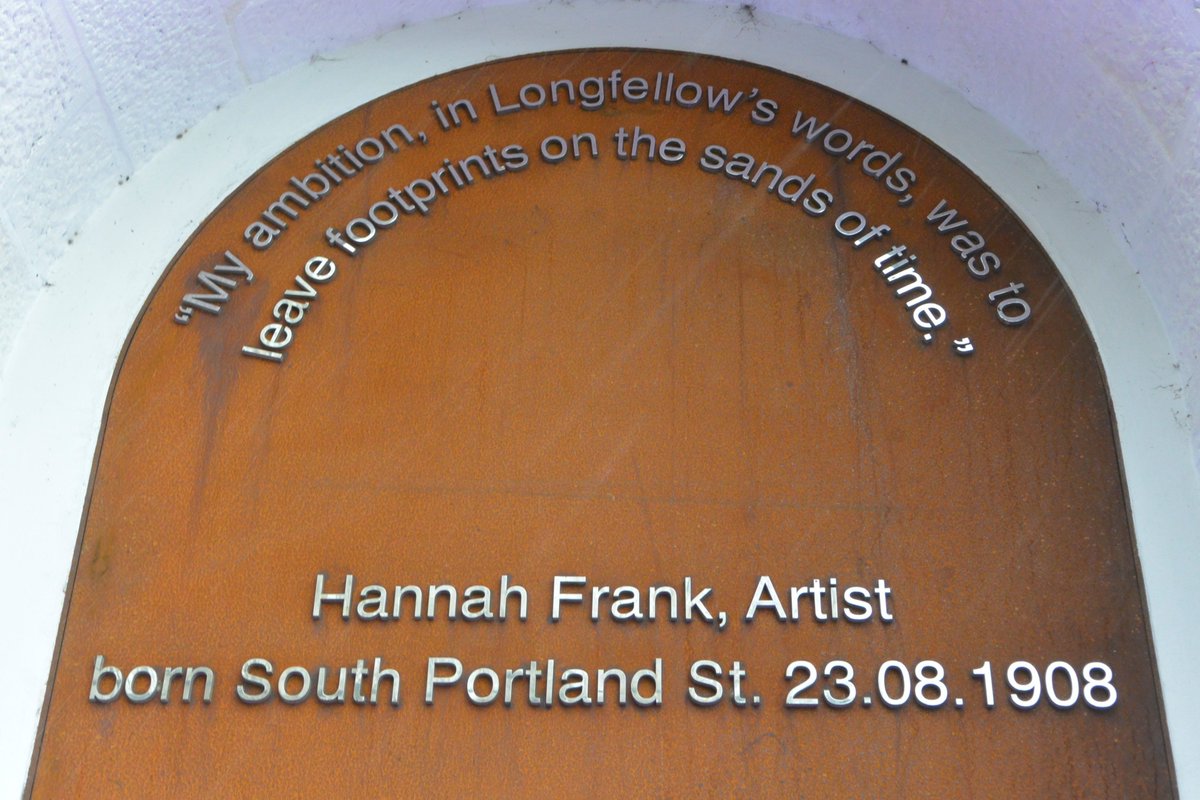
We're now at our final stop! This is the Citizens Theatre, founded in 1945. Behind its modern atrium, the auditorium and backstage workings of Her Majesty’s Victorian theatre are preserved. This street once bustled with tenements and shops, dance halls and cinemas. 

Many famous leading ladies have appeared here, but we are going to focus on an actor whose story weaves together some of the themes of our walk. Ida Schuster was born in Govan St (now Ballater St) in 1918, at the heart of the Gorbals Jewish shetl (village).
She was the youngest of nine born to Yiddish-speaking Lithuanian immigrant parents, who fled the Russian pogroms in the late 19th century. The hub of the community was the Jewish Institute in South Portland St, which helped fund and settle newcomers.
As well as providing a sports club, a library, restaurant - even a ball-room - it was also home to the Jewish Institute Players. It was here, despite her shyness, that Ida began acting aged 15. She starred in roles in Mother Courage & The Glass Menagerie, while still very young.
In 1941, the Players became part of the Unity Theatre, touring to bring political theatre to the masses. Their major success was The Gorbals Story, which played to over 100,000 people in 6 months. Its characters represented a cross-section of post-war Gorbals society.
Ida also helped found the Glasgow School of Drama, now part of the world-renowned Royal Scottish Conservatoire, and directed the inaugural production at the Tron Theatre in 1981. Her last appearance on stage was at the Citizens in 2015.
Ida died, aged 101, in April 2020. Just before her death she had started a new venture as a podcaster - possibly the world’s oldest?!
thebiglight.com/oldschool
thebiglight.com/oldschool
And that brings us to the end of our virtual tour. If you would like to download the map and head out for a wander yourself, you can do so here: womenslibrary.org.uk/discover-our-p…
And please do continue to share your stories of women and history that you find in your own area, using the hashtag #WomenMakeHistory and tagging us here @womenslibrary
Finally, I would like to say a big thank you to all of you for joining me for this Twitter tour around the Gorbals! I hope you’ve all enjoyed it, and learned, as much as I have!
And a big thank you to my fellow volunteers, for getting all these wonderful images to me!
And a big thank you to my fellow volunteers, for getting all these wonderful images to me!
• • •
Missing some Tweet in this thread? You can try to
force a refresh

